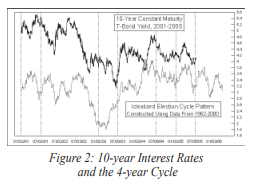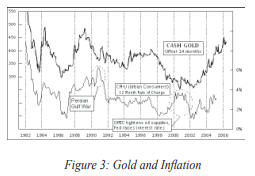To those new to swing trading, this 3-part introduction contains a brief explanation of my approach to the markets. It is not intended to be a complete methodology. Rather, it’s a base upon which on upon which one can build.
Swing Trading Defined
Swing trading is simply short-term trading. Positions are held, on average, for 2 to 7 days. Under ideal conditions, positions can be held much longer, creating the occasional “home run”. My style of swing trading is momentum based. This means that I first seek to identify a trend and then look for a place to enter. Although I do have some transitional patterns (early trend), I do not attempt to pick tops or bottoms.
Trading Pullbacks
I believe “The Trend Is Your Friend” is the truest market adage. And, the best way to enter trends is on pullbacks. Therefore, momentum pullbacks and variations thereof are my favorite patterns. They consist of a market in a strong trend (a) that has begun to correct (b). An entry is triggered when the trend begins to resume (c) and a protective stop is placed below the low of the setup (d). As the trend continues, partial profits should be taken (e) and the stop on the remaining shares should be trailed higher (f).
Let’s break it down:
p1
thing about stocks that are trending is that they leave clues behind. I have dubbed these clues “Trend Qualifiers”. They include base breakouts, gaps, laps, wide range bars, strong closes, new highs, and how much a stock moves over a given period of time on a percentage or point basis. The behavior of moving averages can also be used to help determine trend.
Let’s look at an example of trend qualifiers.
- The Nasdaq Biotech Ishares (IBB) gaps to new 1-month highs out of a low-level base. Notice the move is on a wide range bar and the stock closes well (in the top of its range).
- The stock gains over 20% in 16-days as the trend gains strength.
- Notice that this strength began with a wide range bar higher that closed strongly.
- Also notice that the stock is hitting new multi-month highs during this period.
- The stock has an orderly pullback.
- The trend resumes.
- The stock has an extreme wide range bar higher. Although this is a sign of strength, at this point, you have to begin to question if the move has exhausted itself. This is normally a good time to take some profits and tighten your stop on your remaining shares.
- The stock gaps to 1-year plus highs.
- The stock reverses and closes poorly. At this point, you have to begin to question if the trend has ended and a new trend in the opposite direction is emerging.
Now let’s look at the same chart with the moving averages. My favorite moving averages are a 10-period simple and a 20 and 30-day exponential. These are explained further in my book Dave Landry On Swing Trading in Chapter 7, Bow Ties.
- The moving averages are sloping downward.
- The moving averages come together and turn up. This action forms a “Bow Tie” (see Chapter 7).
- Notice that there is “daylight” between the stock’s lows and the moving averages (i.e. the lows are greater than the moving average). This is a sign of strength as the stock gains momentum.
- Notice that the slope of the moving averages is positive (up).
- Also notice that the moving averages are in “proper order”—the faster moving averages (shorter periods) are above the slower moving averages (longer periods).
The Trend Should Be Obvious
I’m amazed at how many try to make a trend exist where there is none. The trend should be obvious. Quite simply, if the right side of the chart is higher than the left, then it’s in an uptrend. Conversely, if the right side of the chart is lower the left, then it’s in a downtrend. Said another way, if you can’t draw a big arrow pointing in the direction of the trend, then it’s probably not a trend.
The Correction
The correction (i.e. pullback) can be defined in terms of width (number of days since the new high was made) and depth (how far the stock pulls back). In general, the width should be 2-7 bars. More than that and it’s possible that the stock is losing momentum. As far as depth, too deep and it’s possible that the trend has ended and a new trend (i.e. reversal) is emerging. Conversely, if it’s too shallow it’s possible that the stock has corrected enough. Therefore, “depth” can be arbitrary. And, it can vary greatly depending on the price and volatility of the stock. Higher priced and more volatility stocks can have deeper corrections before their trend resumes. Whereas the same move in a lower priced or less volatile stock would be viewed as a trend reversal.
Entries
By placing your entry above the market for longs, you will only get filled if the stock begins to move in the intended direction. Of course there’s no guarantee that it will continue to move in your favor but at least you won’t get filled if a rally never materializes.
p2
As a general statement, for longs, entries should be around 10 cents above the prior day’s high. This allows some wiggle room should the stock barely get past the prior day’s high (a possible target for market makers) before reversing.
Keep in mind that where you enter will also depend upon market conditions. In very good conditions, you might actually look to enter early if it appears that the trend is resuming (i.e. an intra-day rally or reversal). Conversely, in poorer conditions, you might look to enter the stock at higher level. Further, you might even want to let it trigger and wait to see if continues to follow through before entering (i.e. a second entry).
Good luck with your trading,
Dave Landry

 Hello, I am the newest member to this wonderful MTA staff, and I will be the accounting manager. Over the years, I have...
Hello, I am the newest member to this wonderful MTA staff, and I will be the accounting manager. Over the years, I have...







